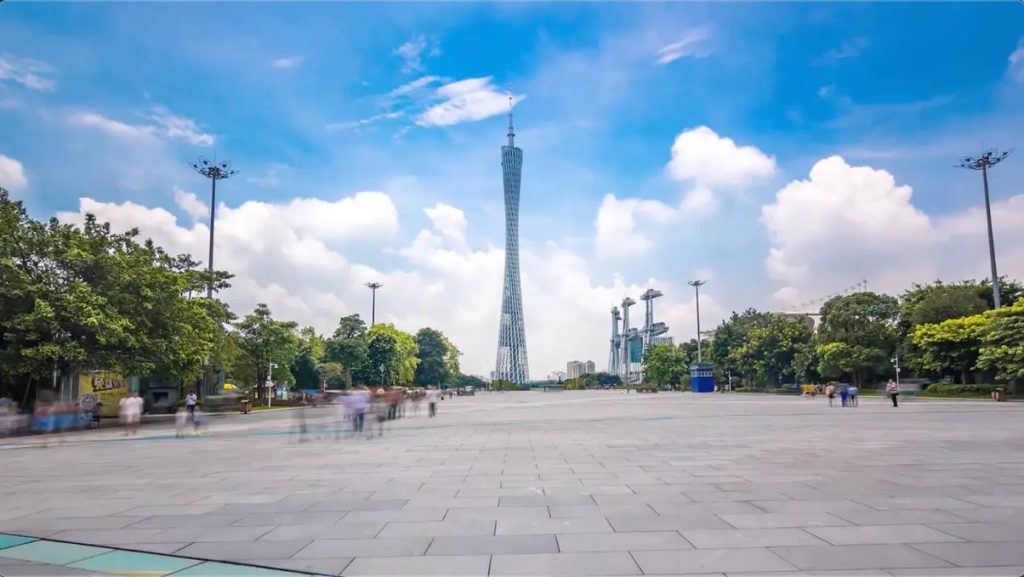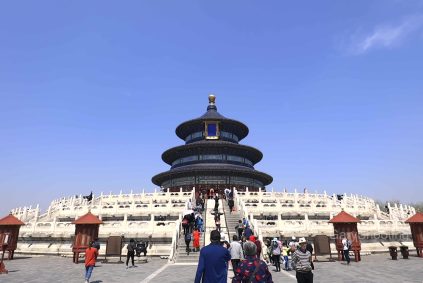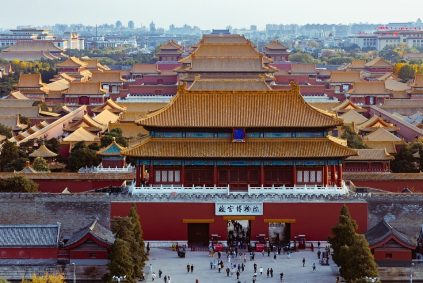Exploring Guangzhou’s Religious and Cultural Landmarks: A Journey Through Spiritual Heritage
Cantón, a city steeped in history and cultural diversity, serves as a melting pot of religious traditions that have shaped its identity over centuries. From ancient Buddhist temples to vibrant mosques and serene Taoist shrines, the city’s spiritual landmarks offer a window into the coexistence of faiths and the enduring legacy of cultural exchange. Here are some of Guangzhou’s most significant religious sites, each telling a unique story of devotion, artistry, and community.
Buddhist Treasures: Temples of Tranquility and Reflection
Six Banyan Tree Temple: A Timeless Symbol of Buddhist Devotion
Founded in 537 CE during the Liang Dynasty, the Six Banyan Tree Temple is one of Guangzhou’s oldest and most revered Buddhist sites. Its name derives from the six ancient banyan trees planted within its grounds, though only one remains today. The temple’s centerpiece is the Flower Pagoda, an eight-sided structure with nine stories, each adorned with intricate carvings and colorful tiles. The pagoda’s design reflects a blend of Indian, Central Asian, and Chinese architectural influences, symbolizing the Silk Road’s role in spreading Buddhist teachings. Visitors can climb to the top for panoramic views of the city or meditate in the temple’s peaceful courtyards, which are dotted with stone sculptures and lotus ponds.Hualin Temple: A Sanctuary of Serenity in the Heart of the City
Located near Shangxiajiu Pedestrian Street, Hualin Temple is a hidden gem that offers respite from Guangzhou’s bustling urban life. Established during the Eastern Jin Dynasty (317–420 CE), the temple has undergone numerous renovations over the centuries, blending architectural styles from different eras. Its main hall features a golden statue of the Buddha, surrounded by delicate murals depicting scenes from Buddhist scriptures. The temple’s gardens, with their bamboo groves and rockeries, create a serene atmosphere for contemplation. Hualin Temple also hosts regular chanting sessions and cultural events, providing insight into Buddhist practices and traditions.Guangxiao Temple: The Birthplace of Chinese Zen Buddhism
Reputed to be the oldest Buddhist temple in Guangzhou, Guangxiao Temple dates back to the 3rd century CE and holds great historical significance. It was here that the Indian monk Bodhidharma, the founder of Zen Buddhism, is said to have preached during his travels to China. The temple’s architecture includes a mix of Tang and Song Dynasty elements, with wooden halls, pagodas de piedra, and ancient inscriptions. The Mahavira Hall, the temple’s largest structure, houses a towering statue of the Buddha, while the surrounding courtyards feature relics such as a stone tablet inscribed with Emperor Wu of Liang’s decree on Buddhism. Guangxiao Temple remains an active center for meditation and study, attracting practitioners from around the world.
Islamic Heritage: Mosques as Beacons of Cultural Exchange
Huaisheng Mosque: China’s Oldest Surviving Islamic Place of Worship
Construido en 627 CE during the Tang Dynasty, Huaisheng Mosque is one of the earliest Islamic structures in China and a testament to Guangzhou’s role as a gateway for international trade and cultural exchange. The mosque’s name, which translates to “Remember the Prophet,” reflects its dedication to the memory of the Prophet Muhammad. Its most striking feature is the 36-meter-tall minaret, known as the “Light Tower,” which served as a navigational aid for sailors along the Pearl River. The mosque’s prayer hall combines traditional Islamic design with local architectural elements, such as the use of green tiles and wooden beams. Huaisheng Mosque continues to function as a place of worship and a symbol of the Muslim community’s enduring presence in Guangzhou.Xianxian Mosque: A Blend of Islamic and Chinese Architectural Styles
Located in the heart of Guangzhou’s Muslim Quarter, Xianxian Mosque is a vibrant center of Islamic culture and education. Founded in the 14th century during the Yuan Dynasty, the mosque has been rebuilt and expanded several times, resulting in a unique fusion of Islamic and Chinese architectural features. Its prayer hall features a traditional mihrab (a niche indicating the direction of Mecca) alongside intricate wooden carvings and calligraphy. The mosque’s courtyard is adorned with a pond and a pavilion, creating a tranquil space for reflection. Xianxian Mosque also operates a madrasa (Islamic school) and hosts community events, fostering dialogue and understanding between different cultural groups.
Taoist and Folk Religion Sites: Where Tradition Meets Spirituality
City God Temple of Guangzhou: A Hub of Local Beliefs and Customs
Dedicated to the City God, a deity believed to protect the city and its people, the City God Temple is a focal point for Guangzhou’s folk religion practices. Originally built during the Ming Dynasty (1368–1644 CE), the temple has been renovated multiple times and now incorporates elements of Taoism, Confucianism, and local folk beliefs. Its main hall houses statues of the City God and his consort, surrounded by offerings of fruit, incense, and flowers. The temple’s courtyards feature smaller shrines dedicated to various deities, including those responsible for wealth, health, and academic success. Visitors can witness traditional ceremonies, such as the burning of joss paper and the lighting of incense, which are central to local spiritual life.Five-Immortals Temple: Legends and Lore Woven into Stone and Wood
The Five-Immortals Temple is named after a local legend in which five immortals descended from heaven on a goat, bestowing rice grains upon the people of Guangzhou and ensuring its prosperity. The temple, built to commemorate this myth, combines Taoist and folk religious elements. Its architecture includes colorful murals depicting the immortals, as well as stone carvings of goats, which have become a symbol of the city. The temple’s tranquil gardens and pavilions provide a peaceful setting for visitors to pay their respects and learn about Guangzhou’s cultural myths. The Five-Immortals Temple also hosts festivals and rituals that celebrate the city’s heritage, making it a lively destination throughout the year.
Discovering Guangzhou’s Spiritual Mosaic
Guangzhou’s religious landmarks offer a rich tapestry of spiritual traditions, reflecting the city’s history as a crossroads of cultures and ideas. Whether exploring the ancient corridors of a Buddhist temple, listening to the call to prayer at a historic mosque, or participating in a local folk ceremony, visitors are invited to experience the depth and diversity of Guangzhou’s religious heritage. Each site serves as a reminder of the universal human quest for meaning, connection, and peace, making them essential stops on any journey through the city’s cultural landscape.
















